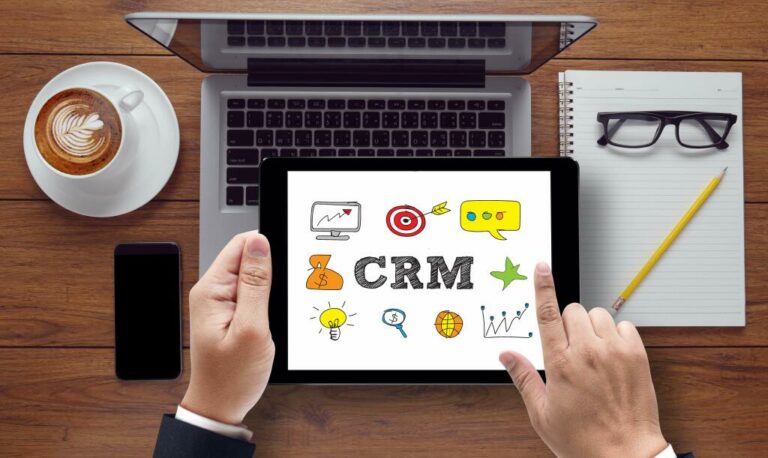The Five Stages of Team Development Principles of Management
Content
- End each meeting with insightful and constructive feedback that improves the group process.
- Strategic Project Management: Theory and Practice for Human Resource Professionals
- The Five Stages of Team Development
- Why are the stages of group development important?
- Navigate the stages of team development
- What are the 5 stages of group development?
- Start in seconds.
- How L&D Professionals Are Using Digital Bootcamps to Build Teams of Tomorrow
They may be feeling some anxiety because of uncertainty about their individual role or future responsibilities. They may feel sadness or a sense of loss about the changes coming to their team relationships. And at the same time, team members may feel a sense of deep satisfaction at the accomplishments of the team. Individual members might feel all of stages of team development team building these things at the same time, or may cycle through feelings of loss followed by feelings of satisfaction. Given these conflicting feelings, individual and team morale may rise or fall throughout the ending stage. It is highly likely that at any given moment individuals on the team will be experiencing different emotions about the team’s ending.

Team norms set a standard for behavior, attitude, and performance that all team members are expected to follow. Norms are effective because team members want to support the team and preserve relationships in the team, and when norms are violated, there is peer pressure or sanctions to enforce compliance. In the performing stage, consensus and cooperation have been well-established and the team is mature, organized, and well-functioning. There is a clear and stable structure, and members are committed to the team’s mission. Problems and conflicts still emerge, but they are dealt with constructively. The team is focused on problem solving and meeting team goals.
End each meeting with insightful and constructive feedback that improves the group process.
The principal work for the team during the Forming stage is to create a team with clear structure, goals, direction and roles so that members begin to build trust. During the Forming stage, much of the team’s energy is focused on defining the team so task accomplishment may be relatively low. Basecamp is a well-known project management software utilized by many project management teams. This software provides a variety of collaboration capabilities, such as a specific discussion space where users can submit comments.
Everyone is high on the same page and working hard towards the ultimate goal. If you have managed to get your team to this stage, be proud of yourself – as there is only going up. In this stage, team members have trust, understanding, and respect.
Strategic Project Management: Theory and Practice for Human Resource Professionals
This may mean providing guidance on decision-making or setting clear deadlines and expectations. The team is uncertain about their role in the team and what is expected of them. Throughout your career thus far, it is likely that you have encountered at least one instance where you were part of a team. Whether it was for a class project, extracurricular activity, or job-related task, being part of a team is an important life skill. Use a collaboration tool like Teamwork Spaces to organize and store your documentation. You’ll be able to access all of your important documents in one location so your team won’t waste time searching for important materials.
They may start having disagreements about how to do a task or express their concerns if they think someone is not doing their fair share of work. From a profitability point of view, it can also help to track the time spent on your projects. This way, you’ll know exactly how long everything took and this can help you to improve your pricing and planning on future projects. Using collaborative tools will allow your team to share feedback and work together in real time.
In the end, they sell the garden, and go their separate ways, capping off the project as a complete success in every way. If the team members have grown attached to the project, they may even mourn the fact that the project is ending and that they need to move on to work on other projects. The Performing stage is what your team is really after — in this stage, you and your team get to enjoy synergy. Unless the team is patient and tolerant of these differences as well as willing to address and work on them, the team and project cannot succeed. Tuckman only added the fifth and final stage in 1977, together with Mary Ann C. Jensen who had previously reviewed his original paper. When one person fails to complete a task, the rest of the group suffers.
A kanban board gives you a visual overview of all of the tasks for your project, so you can keep an eye on any bottlenecks or areas of pressure. There are a few things you can do to reduce the intensity and duration of your storms. One way is to touch base with your team regularly through short stand up meetings.
The Five Stages of Team Development
Bottlenecks get addressed promptly and with purpose since the team can easily collaborate and create the solutions required to get everyone back on track. Here, there’s cohesion, trust, and understanding among team members. The team functions at peak efficiency, and little or no oversight are needed. At the performing stage, it’s easy to accomplish tasks since members are in tandem and understand the process.
- As the work load is diminished, individual members may be reassigned to other teams, and the team disbands.
- At this stage, team members are meeting for the first time, getting acquainted, organizing responsibilities, and trying to find their place within the team.
- Members have a more profound commitment to each other and the project’s completion, so it’s easier to handle conflicts.
- It’s easier to accomplish tasks at this stage as the members are more involved and they understand the whole process.
- Bruce Tuckman’s theory of the five stages of development has been widely used in all aspects of educational and business paradigms.
In 1965, American educational psychological researcher Bruce Wayne Tuckman published Tuckman’s Stages as a way to improve teamwork and enhance company efficiency. His method originally only comprised four stages of team development until 1977, when he teamed with doctoral student Mary Ann Jensen to add a fifth stage. In this post, we discuss Tuckman’s five stages of team development, including how they apply to a modern workforce and how managers can use them to build team cohesion. A team cannot be expected to perform well right from the time it is formed.
Why are the stages of group development important?
Failure to address problems here can result in long-term issues, but once this stage is passed through successfully, things will get easier. In Tuckman’s original 1965 paper, 50% of teams actually jumped directly from stage 1 to stage 3, but for those that did not, the duration and intensity of the “storms” were varied. If your team is all in one place, then a face-to-face kick off meeting is a great way to get things moving.
Cross-Functional MeetingsStay aligned on projects, drive progress and accountability, and improve collaboration. Chiefs of StaffTrack key takeaways from executive meetings, enhance alignment across scaling teams, and amplify the CEO’s communication to help the company flourish. In the Performing stage, you will begin to see your team taking on a life of their own. They are now able to work independently and are self-sufficient. The team is able to handle most tasks and can complete them without much help from you. This can be done by setting goals that the team needs to work together to achieve, or by giving the team positive feedback when they work well together.
The main goal here is to keep the momentum going so that the project wraps up on time. Finally, share the project roadmap so the team can see the starting point, the proposed check-in points, and the end goal. This gives them insight into the bigger goal but also breaks down the timeline into smaller increments. Project scheduling is a critical and crucial part of project management and planning. It’s the yellow-brick-road that, when followed, will lead you to the gleaming project closure right on time.
Navigate the stages of team development
She proposes a clear schedule and takes charge of contacting the local store to see what supplies they can get here, and what supplies they may need to go to the city for. She wants to go to the city to buy seeds because they cannot get the broccoli seed she wants in the local store. Sometimes, subgroups may form around particular opinions or authority figures — which are all clear signs that team cohesion has not happened yet. At this initial stage, a glimpse of a future project leader may emerge, as the person who possesses the largest knowledge about the project’s subject takes unofficial charge. If powerful superhero and entrepreneur teams have taught us anything, it is that working with others can increase your strength and success.
What are the 5 stages of group development?
His common belief of team development that the stages are all necessary for a group to work together as effectively together as possible in order to see success. An organization is only as strong as the teams it creates to handle various projects. For this reason, organizations should invest in team development since it impacts the bottom line significantly.
Start in seconds.
For more advice, check out these lists of team building books and team building tips. Celebrate the successes of the project and openly discuss any issues team members ran into and how they were addressed. When you use Personio, you can learn how to properly document feedback, so you have the time to focus on substantive results. Identify any issues between team members as early as possible to help alleviate the tension. You may want to split people up that do not work well together and restructure the project for maximum efficiency. Finally, they are adjourning to reflect on their strengths and weaknesses as a team.
Team effectiveness is enhanced by a team’s commitment to reflection and on-going evaluation. In addition to evaluating accomplishments in terms of meeting specific goals, for teams to be high-performing it is essential for them to understand their development as a team. There will be better opportunities for realizing the project goals within the set timelines at the forming stage. By adjourning, team members will be up for partnership again over other projects with the same team. The members learn to manage responsibilities, and conflicts remain minimal at this stage. Team members are excited and optimistic about getting started during this stage.
Having worked with Natasha for two months, Ben recognizes that Natasha has a wealth of experience in data science. She is great at compiling and analyzing large data sets to uncover patterns and trends. You can also introduce an open door policy to encourage team members to share their concerns with you.
For example, a team may emphasize submitting work on time but ignore the quality of the work submitted. Team members begin to see and appreciate the contribution and strengths of their team members during the norming stage. Once the team members become familiar with each other, it is almost similar to being in a relationship. You may find the person is flawless and perfect at the beginning. But as you spend more extra time with the person, you start discovering that they’re not.







